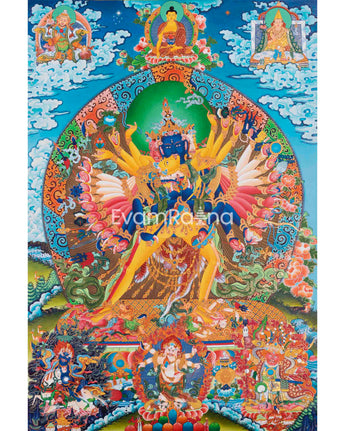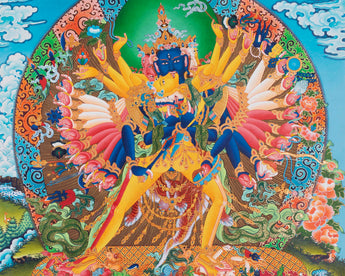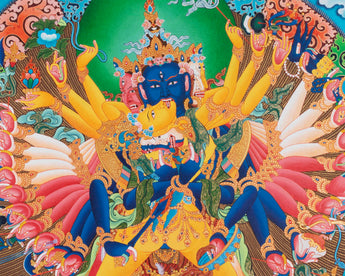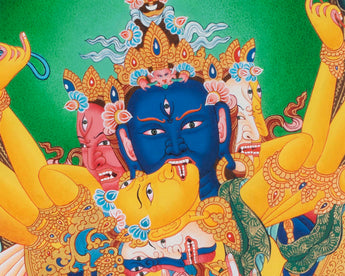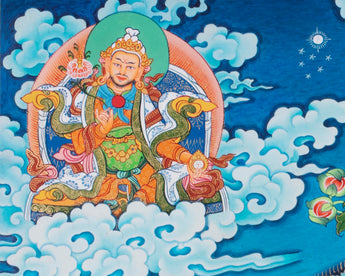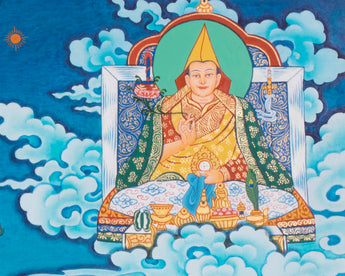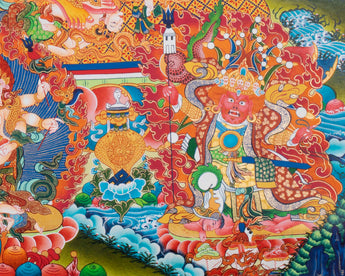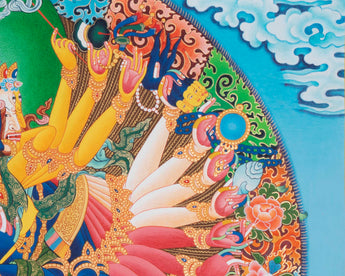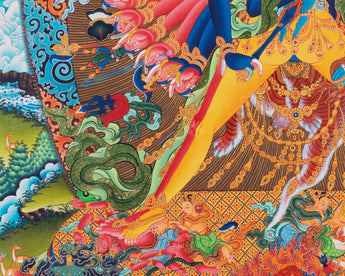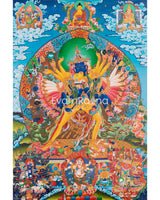
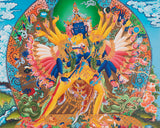
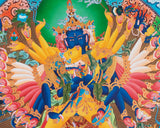
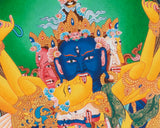
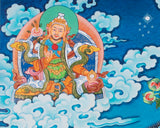
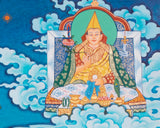
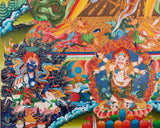
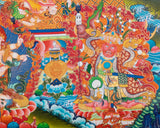
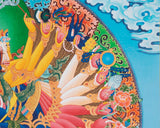
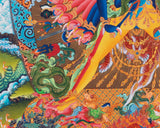
Yidam Kalachakra Thangka | Digital Print | Wall Decoration

100% AUTHENTIC

FREE SHIPPING
Yidam Kalachakra Thangka
Introduction To The Thangka Print :
Kalachakra has four faces and two legs. His front face is blue with bare fangs symbolizing anger , his right face is red embodying attachment, his left is white symbolizing peaceful state and his rear is yellow symbolizing calm abiding. Each face has three eyes. He is adorned with many jewel ornaments, such as earrings, bracelets, necklace, crown, bangles and anklets and so on. He wears a tiger skin. Of his 24 arms, 12 arms are on each side. The first four arms are black , the middle red and the last four arms are white.
The first of the black arms embraces the consort and wields a vajra ; the second, a sword, the third, a trident, and the fourth, a cleaver. The first of the right red hands holds a flaming arrow, the second, a long handled vajra hook, the third, a Damaru, and the fourth, a hammer. The first right white hand holds a wheel, the second a sword, the third a jeweled stick, and the fourth axe.
The first of the left black hands holds a bell, the second a shield, the third a Khatvanga, and the fourth a kapala. The first of the left red hands holds a bow, the second a lasso, the third a precious jewel, and the fourth a white lotus. The first of left white hands holds a white conch, the second a mirror, the third iron chain, and the fourth the head of the deity Brahma by the hair. Kalachakra has only two legs: The right one is red and the left one is white symbolizing the right energy channel containing blood and left energy channel containing white bodhicitta.
The consort of Kalchakra is called Vishvamata. She is in pratyalidha attitude. She is yellow and has four faces, each of which has three eyes. The other three faces are white, black and red. She has eight arms, four on each side. Her first right hand embraces Kalachakra, her second wields a vajra hook, her third a damaru, and her fourth a rosary. The first of her left hands embraces Kalachakra and holds a Kapali filled with blood, the second wields a lasso, the third a lotus and the fourth a precious jewel. The consort wears a crown and is adorned with five ornaments. She is union with the deity Kalchakra which symbolizes union of wisdom and compassion.
Kalachakra is not only a deity but a teaching, a tantra. It has it’s own mandala, it’s own text, it’s mantras, prayers, meditation practices, ritual practices, ritual dances, and a long and colorful history. It is through the integration of its many components that one is able to realize and experience the mind of Kalachakra. The more deeply one practices it, the more expansive and profound is its results.
How does Thangka benefit us?
It goes without saying that every detail of a painting has a symbolic meaning. Regardless of your religious affiliation, a thangka can help you on your path to enlightenment, whether you practice Buddhism or have other religious convictions. Thangkas are paintings that depict deities with various iconographic elements and symbolism that encourage meditation on the teachings of the god they depict. Any thangka is intended to aid in the removal of the film of ignorance, which is a significant barrier to the road to enlightenment. The Thangka is revered as a holy item. They promote positivity, spread Buddhism's teachings, bring about peace, harmony, and oneness, and dispel any negative energy that may be there.


